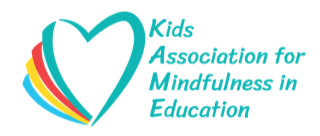Welcome to the Kids’ Association for Mindfulness in Education, a place where youth can come together to mindfully do good in the world, and help get mindful programs into schools.. Practicing mindfulness means different things to different people. For some, it is about cleaning the environment, and for some it is about anti-bullying. It is always about paying attention to the present moment, and living with kindness.
 The statistics for the number of tweens and teens suffering from anxiety, depression, anger, bullying, suicide, and homicide have risen greatly in the past few years, and some kids may think there is nothing they can do about it. But there is. Mindfulness practice can help kids learn better ways to cope with emotions and deal with stress as they grow up. Young people who practice mindfulness will be happier teenagers and more peaceful adults.
The statistics for the number of tweens and teens suffering from anxiety, depression, anger, bullying, suicide, and homicide have risen greatly in the past few years, and some kids may think there is nothing they can do about it. But there is. Mindfulness practice can help kids learn better ways to cope with emotions and deal with stress as they grow up. Young people who practice mindfulness will be happier teenagers and more peaceful adults.
We invite you to share your voice as it pertains to current events and mindfully making this world a better place. We can make a positive difference, if we all come together, help each other navigate through middle school and high school, and support each other in our events, articles, or interviews, sharing any information that we have, to get this message about the benefits of mindfulness out to as many kids, parents, teachers, and health care practitioners as we can.
We support anything in the Mindfulness area, such as mindfulness, positive thinking, kindness, peace, yoga and mindful movement, breath work, communication, diversity, inclusion, gratitude, social emotional learning, and so much more. It is all so important, especially with everything going on in the world right now.
We must all come together and scale up in order to stop the violence and make a positive impact. We must collaborate, and that is why I’m starting this Association for mindful kids. We must get this message out, and into as many schools as we can.
So, if you are a kid that wants to help make a difference, I want to hear from you. If you want to write a blog post, or if you want to help be an Ambassador of Peace and Kindness, or if you have a website that you want to share and think should be included as part of our “Partners for KAME Peace” resources page (which is reciprocal because we hope all members will create a page like that on your website too), or if you have an idea for an event or speaker, let me know.
We respect your trust, and expect that you will do the same in return. You will receive information from us about the annual international Mindful Kids Peace Summit (which I hope you will all attend—you will get service hours and there are a lot of cool speakers!). We won’t give or sell your name or email address or any information to any person or institution that is not associated with the Association or the Summit.
And it’s really important to learn the skills of mindfulness early, so if you have younger siblings that are in pre-school or elementary school, please tell your parents and teachers to check out the KAME website to see all of the great resources they can use in early learning.
One of our missions is to get these mindful programs into all schools K-12, so if you’re interested in starting a KAME Club at your school, send me a note and let me know. We have some mindful activities and discussion points so we can help you get started!
Together we can make a difference.
Think Well to Be Well,
Adam

